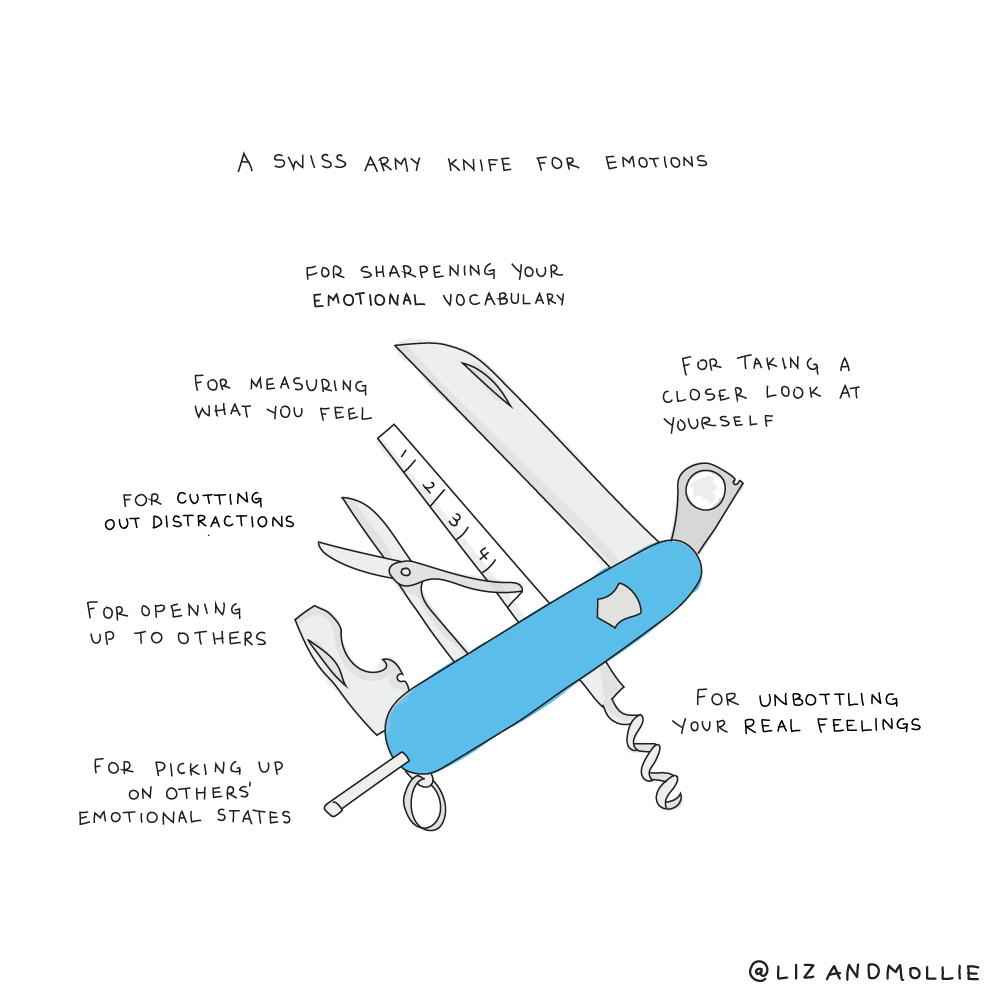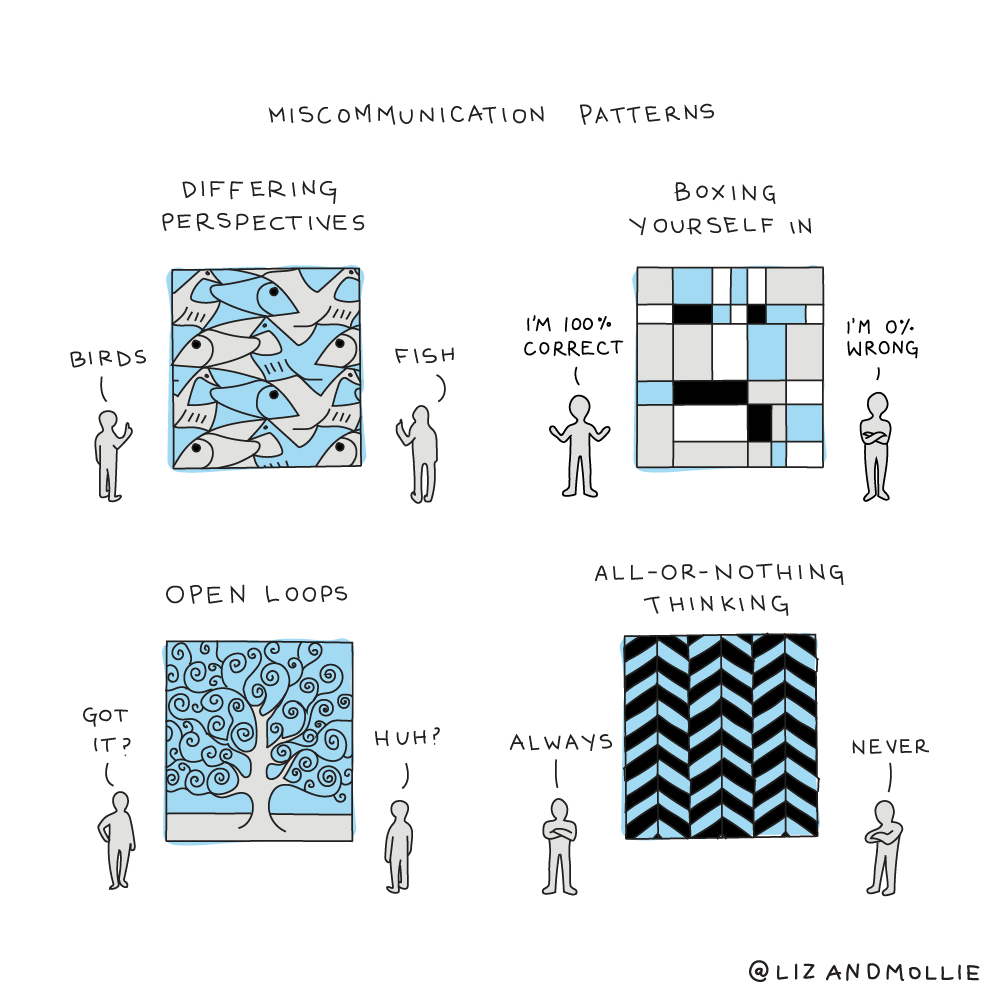Turns Out Emotions Do Belong in the Workplace—Here’s Why

Emotions affect so many parts of work, from collaboration to decision-making, motivation, and communication between employees and managers. But in American work culture, “emotional” can be a dirty word. There’s a misconception that expressing feelings is unprofessional or out of place in the office.
IDEO organizational designer Mollie West Duffy doesn’t buy it. “By ignoring our feelings at work, we overlook important data and risk preventable mistakes,” she says. “We send emails that cause unnecessary anxiety, we fail to make work meaningful, and we are more likely to burn out.”
Last month, West and her coauthor Liz Fosslien released No Hard Feelings: Emotions at Work and How They Help Us Succeed, which argues for harnessing emotions to push your career forward. “Most of us have never learned how to do this in our professional lives, let alone been allowed to admit how much feelings at work matter,” she says. IDEO’s Anna Moore Silverstein sat down with Mollie to learn more.
What inspired you to write this book?
The inspiration for this book came from the fact that when Liz and I started our first jobs, we thought professionals did not fail, did not fuss, and certainly did not feel. But we soon realized this view was not only unrealistic, it stood in the way of our sense of fulfillment—and of our success. Our goal as we began researching No Hard Feelings was to better understand our emotions—when are they useful and when are they just noise? Can we mold them to change how we experience work?

Can you explain the concept of an emotional work culture?
Emotional culture is how and to what extent employees of a company express feelings at work. Every office has one, though few companies talk about emotional norms. Emotional culture affects how much we enjoy our jobs, how stressed we might feel, and our ability to do work well and on time.
To instantly get a sense for a particular office’s emotional culture, Wharton professor Adam Grant suggests you say to an employee,“Tell me a story about something that would only happen here.” For example, at IDEO’s New York studio, Thursday lunches are dedicated to Make(believe) time. Creative activities like aromatic fingerpainting, writing group haiku poems, and blind contour drawing help employees get goofy. You can also look for more subtle cues that indicate what kind of emotions are acceptable in a work space. Do your coworkers seem more comfortable expressing frustration or joy? Are there tissues in meeting rooms (which might indicate it’s okay to cry)? Is it cool to respond to emails with a funny cat GIF?
Why does emotional culture matter so much?
When we feel supported and motivated by our colleagues, we are happier, more productive, and stick around longer. We’re also healthier and better able to cope with job stress. And when our bosses respond to our mistakes with patience instead of fury, we trust them more.
As an org designer, you help people design and scale change in their organizations, and change can be challenging. How do you account for emotions in client work?
Something we say a lot at IDEO is “Change is beautiful.” But change is also uncomfortable, and can be an emotional roller coaster
To help with this emotional journey, we try to set time for weekly check-ins. On my last project, we had a retrospective every Friday that included the client team. We asked everyone to go around and share one thing that went well, one thing they’d like to change, and their overall feelings about the week. This helped us all share our feelings in a dedicated time, so it felt less awkward.
I also have had to work on my own emotions with clients. I tend to be an under-emoter, which means I process my feelings inside. (You can take our emotional expression tendency assessment to see if you are an over-emoter or an under-emoter). So I’m working on trying to warm more quickly. I try to verbalize how excited I’m feeling about a project and a team, to help get our energy up. I also try to verbalize when I’m feeling overwhelmed and I need more help. It’s an ongoing process!
Are there other exercises you would recommend to help a company build a better emotional culture?
Awareness is a really powerful communication tool. Many of the CEOs interviewed by New York Times columnist Adam Bryant create “user manuals” or “how to work with me” guides to make collaboration easier. It’s one of the best ways to pre-empt potential misunderstandings—or hurt feelings. To achieve the same with your team, Adam recommends blocking off an hour to answer the questions below.

What everyone should know about you:
- What are some honest, unfiltered things about you?
- What drives you nuts?
- What are your quirks?
- What qualities do you particularly value in people who work with you?
- What are some things that people might misunderstand about you that you should clarify?
How to work with you:
- What’s the best way to communicate with you?
- What hours do we want to work together? Where and how do we want to work (same room, what kinds of meetings, what kinds of file sharing, etc)?
- What are our goals for this team? What are our concerns about this team?
- How will we make decisions? What types of decisions need consensus? How will we deal with conflict?
- How do we want to give and receive feedback (one-on-one, in a group, informally, or during a specified time each week)?
For me, answering these questions was about revealing that I warm up to people slowly. Once people get to know me, I think they find that I’m warm, generous, and even silly. But I can come across as more reserved and serious at first. For Liz, it was about showing people that she loves to be left alone when she works. For people who enjoy frequently emailing or messaging one another, her behavior could come across as antisocial, but she’s a person who needs to put her head down to work—cognitive switching is a productivity sinkhole.
Exercises like these make it easy for people to be honest up front, and set an emotional tone for your team or office. By sharing early, you can make it easier to meet people where they are, and set the stage for sharing of feelings and preferences throughout the process.
Words and art



Subscribe

.svg)







